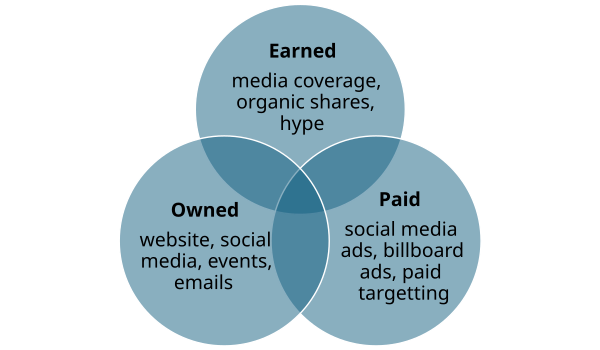Changemakers' Toolkit/Communicating for change/Delivering Impactful Communications
Explanation of tool
[edit]To make change, we need to invest in getting our messages out there.

To reach and engage audiences, changemakers need to:
- Go where they are – deliver your messages using the channels and platforms that your audience is most likely to engage with.
For example: If you're running a local campaign, you might focus on local news and community Facebook groups.
- Speak their language – communicate using language, tone and formats that resonate with your audience.
For example: If you're trying to engage a younger audience, you need to think about using more video. Focus on content that feels natural to platforms like TikTok.
- Use the right messengers – the people you choose to talk about your issue should look and sound like your audience. People will listen more to authentic voices.
For example: If you're trying to reach photographers to ask them to relicence their images, they’re more likely to listen to other other photographers who value their time and effort.
To be a successful campaigner we can’t just send a press release or a tweet and hope someone is listening. We're operating in crowded media spaces, where huge numbers of different voices are competing for our audience's attention.
Use all the channels available to you in creative and agile ways. And most importantly, we need to capture our audience's interest with bold and creative tactics. Because for most of us, the biggest risk isn't that we get negative attention. It's that we get no attention at all.
So always think about what you can do to make your messages stand out.
Case study
[edit]
In South Africa Freedom of Panorama is currently restricted by law. This stops photographers from sharing images of buildings and sculpture in public spaces, as the architect or artist retains rights to images of their works. Since 2014 activists have been working to remove the restrictions as part of a new Copyright Amendment Bill.
Wikimedia South Africa (WMZA) used a range of tactics to engage communities with the bill’s importance and to apply pressure on politicians who could influence it. This included being physically present at public hearings held by the parliamentary committee in 2017. This proved crucial as the committee often left Freedom of Panorama off the agenda. By being in the same room, WMZA could remind them of its inclusion.
In parallel, WMZA used a public petition to raise awareness and gather support. It also established ReCreate with a community of allies to share resources and coordinate their advocacy for the bill.
The bill was passed in 2018, but was delayed for two years. Blind South Africa, part of ReCreate, got the Constitutional Court to declare this delay a denial of their right to access knowledge. This raised the significance of the bill. WMZA also countered disinformation against the bill, with strong messaging directly targeted at opposition to it.
Whilst the bill has not yet been passed, progression so far is due to clear and targeted communication, coordinated with allied organisations in South Africa.
Sources
[edit]- Scott, Douglas (24 January 2024). "Advocating for Freedom of Panorama in South Africa". Diff: News from across the Wikimedia movement.
- Putz, Franziska; Fontenelle, Giovanna (30 March 2023). "“We Are Second-Class Citizens on the Internet”: How Copyright Reform in South Africa Can Serve the Free Knowledge Movement Globally". Diff: News from across the Wikimedia movement.
- Wikimedia South Africa/Copyright Amendment Bill
Homework exercise
[edit]Thinking about your own work, identify a campaign message or activity you want to communicate.
Set a timer for five minutes and in that time list as many possible communications tactics as you can think of.
Don't stop to consider the practicalities or costs and be as ambitious and creative as you can!
